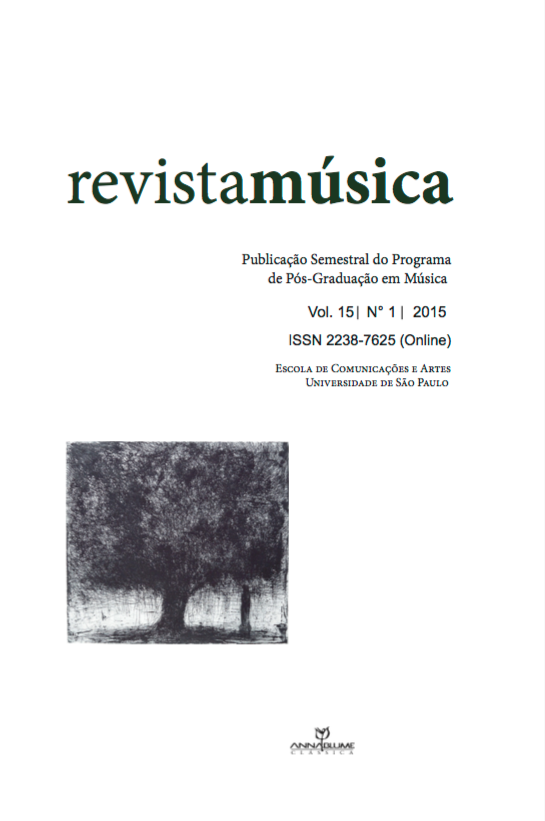Fabritio Caroso’s Balletti: “The dancer’s own language?”
DOI:
https://doi.org/10.11606/rm.v15i1.114701Palavras-chave:
Renaissance Dance, Rhetoric, Fabritio Caroso, BallettiResumo
In the 16th Century, ladies and gentlemen of noble birth were taught from an early age the art of dancing, necessary to survive in the hierarchical world of the court. A Neo-Platonic perspective on dancing was at the core of Renaissance thinking (Humanism) and persisted throughout the 17th Century. In dance circles the principles of harmony and order in the cosmos, harking back to the classical world of Plato and Quintilian, were already well established in Italy by the end of the 15th Century. The balli were structures consisting of many different rhythmic sections throughout which a playful narrative of love, courtship and drama unfolded. By the second half of the 16th Century, two notable dancing masters, Fabritio Caroso and Cesare Negri, were beginning to record their teaching and advice in manuals, which serve as the first known comprehensive and detailed treatises on court dance. By the late 16th Century, the balletto still involved the theatricality of narrative and contrasting or varying emotions. It was still a performance or game for the spectators as well as for the dancers themselves, despite being performed in a social context. In this article, we take a closer look at two balli presented by Caroso: Ardente Sole and Laura Soave, showing that their structure was inspired by rhetorical principles.
Downloads
Downloads
Publicado
Edição
Seção
Licença
Copyright (c) 2015 Mary Collins

Este trabalho está licenciado sob uma licença Creative Commons Attribution-NonCommercial-ShareAlike 4.0 International License.
Autores que publicam nesta revista concordam com os seguintes termos:
- Autores mantém os direitos autorais e concedem à revista o direito de primeira publicação, com o trabalho simultaneamente licenciado sob a CC Attribution-NonCommercial-ShareAlike 4.0 que permite o compartilhamento do trabalho com reconhecimento da autoria e publicação inicial nesta revista.
- Autores têm autorização para assumir contratos adicionais separadamente, para distribuição não-exclusiva da versão do trabalho publicada nesta revista (ex.: publicar em repositório institucional ou como capítulo de livro), com reconhecimento de autoria e publicação inicial nesta revista.
- Autores têm permissão e são estimulados a publicar e distribuir seu trabalho online (ex.: em repositórios institucionais ou na sua página pessoal) a qualquer ponto antes ou durante o processo editorial, já que isso pode gerar alterações produtivas, bem como aumentar o impacto e a citação do trabalho publicado (Veja O Efeito do Acesso Livre).


